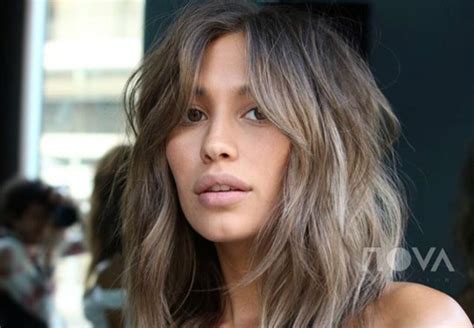Transitioning from Black Hair to a Vibrant Hue
Going from black hair to a lighter shade is a transformative journey that requires careful planning and execution. But once you take the plunge, a whole new world of hair colors awaits you. Here are seven alluring options to inspire your next salon appointment:

-
Honey Blonde (Level 7): For a warm and sun-kissed look, honey blonde is a universally flattering choice. It’s perfect for adding dimension to dark hair without going too light.
-
Chocolate Brown (Level 5): If you prefer a more subtle shift, chocolate brown is an elegant and sophisticated option. It’s a versatile shade that pairs well with both warm and cool undertones.
-
Auburn (Level 6): With its fiery red-brown hue, auburn adds a touch of drama to your look. It’s a statement shade that turns heads and flatters most skin tones.
-
Caramel Balayage (Level 8): For a low-maintenance yet impactful transformation, caramel balayage is the answer. This technique blends golden caramel tones into black hair, creating a natural-looking sun-drenched effect.
-
Ombré Blonde (Levels 8-10): If you desire a gradual transition from black to blonde, ombré is a stunning choice. It involves lightening the hair from the mid-lengths to the ends, resulting in a chic and dimensional look.
-
Burgundy (Level 6): For a bold and captivating hue, burgundy is a rich and alluring option. It’s perfect for those who want to make a statement with their hair color.
-
Platinum Blonde (Level 10): Going platinum is the ultimate color transformation. It requires multiple bleaching sessions and is best suited for those with healthy, resilient hair.
Transitioning with Care
To ensure a successful hair color transformation from black, follow these important tips:
-
Consult a professional: A skilled hairstylist will assess your hair’s condition and recommend the best approach to achieve your desired shade.
-
Use a hair mask: Deep conditioning masks can help repair and strengthen your hair before and after bleaching.
-
Limit heat styling: Heat can damage your hair, especially when it’s been chemically treated. Use a heat protectant and limit the frequency of heat styling.
-
Avoid excessive washing: Over-washing can strip your hair of its natural oils, which can lead to dryness and breakage. Use a gentle shampoo and avoid washing your hair too often.
-
Use color-safe products: Invest in shampoos and conditioners specifically designed for color-treated hair to maintain the vibrancy and longevity of your new hue.
Motivation and Pain Points
Motivations:
- Desire for a fresh and trendy look
- Want to express your individuality
- Complement a new hairstyle or life event
Pain points:
- Fear of damaging your hair
- Concern about the maintenance and upkeep
- Hesitation to change your natural hair color
Tips and Tricks for Success
-
Start with a patch test: Before applying color to your entire head, test it on a small patch of skin to check for any allergic reactions.
-
Use a gradual approach: If you’re going from black to very light hair, consider using a gradual approach by lightening your hair incrementally over several sessions.
-
Protect your ends: The ends of your hair are most susceptible to breakage. Use a leave-in conditioner or hair oil to keep them hydrated and prevent split ends.
-
Get regular trims: Regular trims can remove damaged ends and promote healthy hair growth.
Pros and Cons of Hair Color Transformation
Pros:
- Improved self-esteem and confidence
- Ability to experiment with different looks
- Versatile options to suit various skin tones
Cons:
- Potential hair damage if not done properly
- Increased maintenance and upkeep
- Cost of professional coloring services
Tables for Easy Reference
Table 1: Hair Level Classification
| Level | Description |
|---|---|
| 1-3 | Black |
| 4-6 | Brown |
| 7-9 | Blonde |
| 10 | Platinum |
Table 2: Recommended Lightening Techniques
| From Black to | Recommended Technique |
|---|---|
| Brown | Balayage, Foils |
| Blonde | Double Process, Olaplex |
| Platinum | Multiple Bleaching Sessions |
Table 3: Tips for Maintaining Colored Hair
| Tip | Description |
|---|---|
| Use color-safe products | Prevents fading and damage |
| Avoid excessive heat styling | Use heat protectant and limit usage |
| Deep condition regularly | Repairs and strengthens hair |
| Get regular trims | Removes split ends and promotes growth |
Table 4: Pros and Cons of Hair Color Transformation
| Pros | Cons |
|---|---|
| Improved self-esteem and confidence | Potential hair damage |
| Ability to experiment with different looks | Increased maintenance and upkeep |
| Versatile options to suit various skin tones | Cost of professional coloring services |
